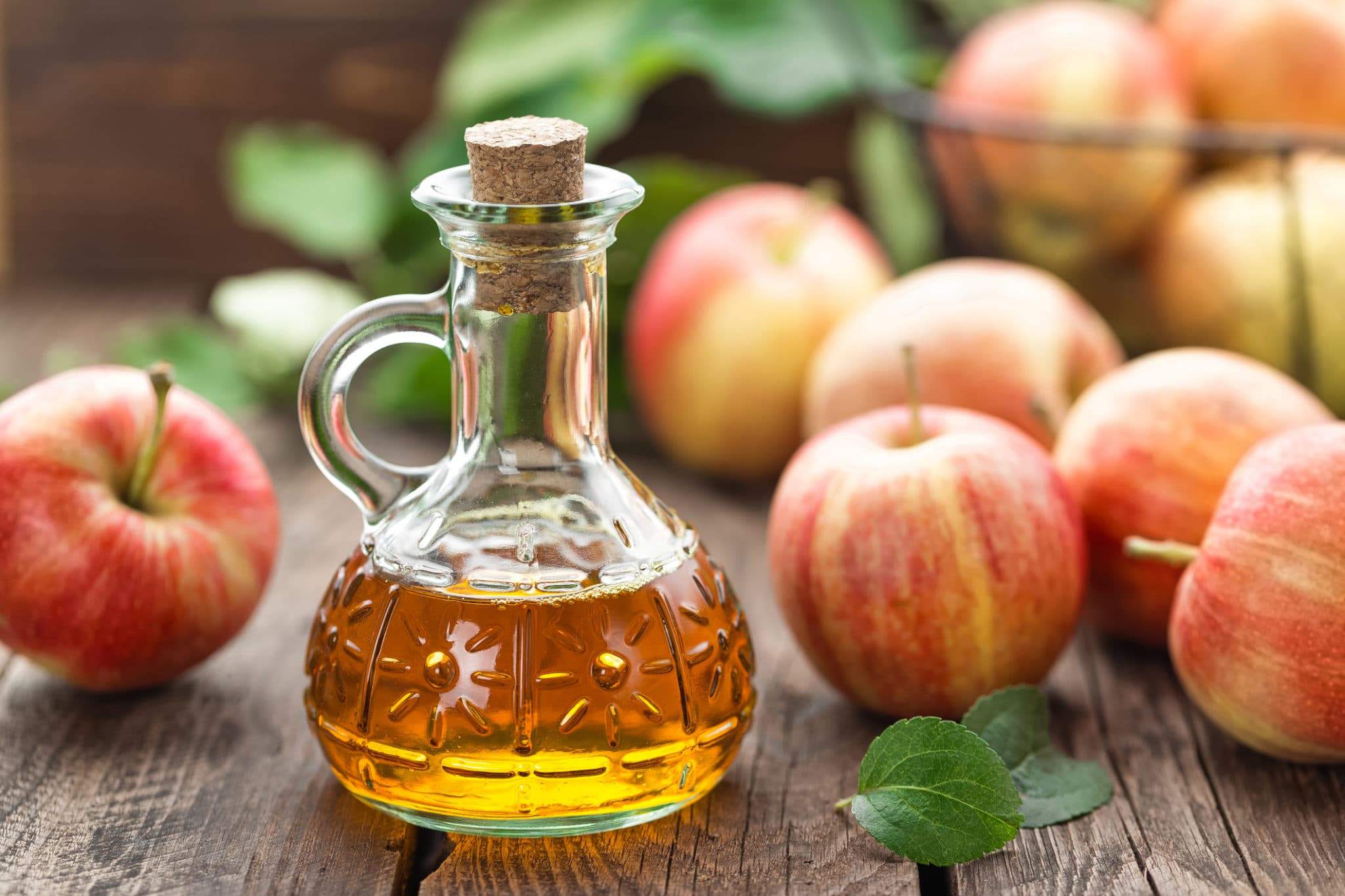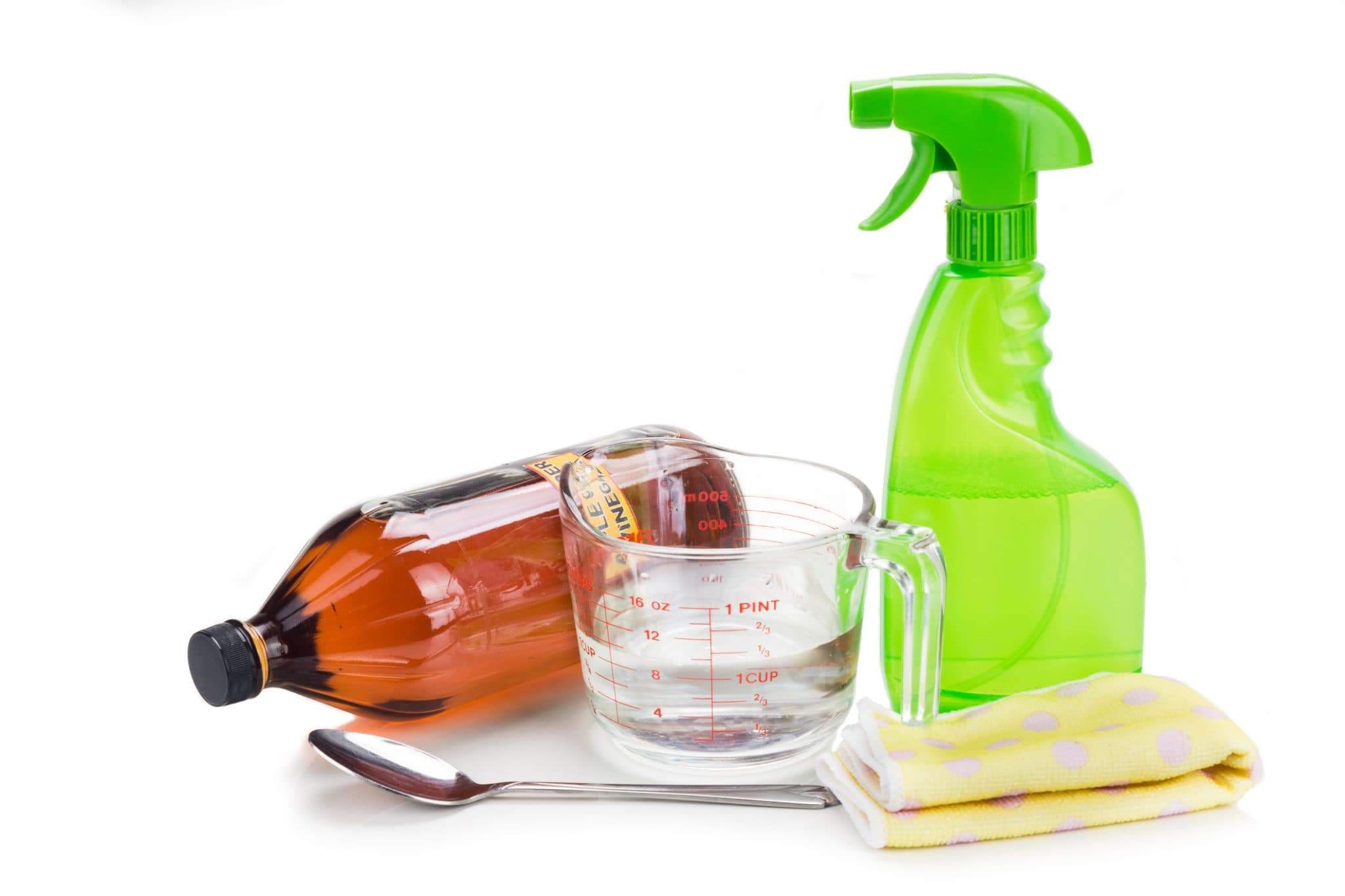
Maybe you’re just starting your culinary health journey or just looking for a few extra cooking tips. Whatever brings you here, welcome to The Naturopathic Kitchen! Each week we explore a new herb or food that packs surprising health benefits that you can incorporate into your daily meals. Whether you’re a novice or cooking expert, we’re sure you’ll find some interesting tips that will stimulate your appetite for health! Today we take a taste of apple cider vinegar.
Apple Cider Vinegar 101
While apple cider vinegar (ACV) doesn’t typically come to mind for ingredients to use in the kitchen, it can provide very valuable and useful health boosts. ACV is made from the fermentation of apple juice, and just as with many other fermented foods, it is considered a probiotic. Common uses include aiding in digestion, topically for skin care, as a household cleaner, a gargle for sore throats, a trap for fruit flies, and even as a hair rinse and dandruff treatment. Let’s take a look at some of the history and health benefits of this versatile liquid.
Where does ACV come from? Where can I find it?
Fermenting fruit juices into alcohols and vinegars is one of the oldest human culinary practices and has been around for probably as long has humans have been able to hold liquids in a container. Earliest records date wine vinegar to over 7000 years ago. The first documented uses of fermenting apples into wine started with the Aryans in 2500 BCE. This method eventually made its way to the ancient Greek and Romans who advanced the process into apple cider vinegar. Since ancient times, ACV has been a staple in traditional medicine.
Today, ACV can be found in almost any store where other vinegars are sold. With the advent of internet shopping it can also be easily purchased online. Since apples are often on the dirty dozen list, it is best to find ACV that is certified organic. ACV comes in several varieties based on processing methods: unfiltered, filtered, pasteurized, raw, and double strength. Unfiltered and raw are best for ingesting, while filtered products are best for household cleaning or hair rinses. Pasteurizing involves heating the ACV to temperature high enough to kill any bad bacteria present, but it also cleanses the ACV of beneficial bacteria as well. Double strength means it is twice as acidic. This variety is more expensive and harder to ingest without first diluting with water. ACV also gets more acidic as it ages.
How does ACV help my health?
ACV’s health benefits come from the presence of several different acids that are produced by probiotic bacteria during the fermentation process. Citric acid, succinic acid, and acetic acid have all shown to impact the body in positive ways, both internally and externally. Many of ACV’s historical uses have been support by science including its blood glucose, insulin, and lipid lowering capabilities.1 Research has also demonstrated ACV to be effective at lowering blood pressure as well as preventing bacterial food poisoning.2,3
What is ACV used for?
- Diabetes (Type I and II)
- Insulin resistance
- Dyslipidemia
- Acne treatment, prevention, and scarring
- Hypertension
- Varicose veins
- Obesity
When should ACV be avoided?
Even with all of ACV’s health benefits, it is still an acid and therefore best diluted in warm water. Care should be taken with diabetes since ACV can lower blood sugar. Large amounts of ACV can lower blood potassium levels, so it shouldn’t be consumed in large amounts in those taking insulin or non-potassium sparing diuretics (water pills) or in patients with a history of kidney disease.
Let’s try out apple cider vinegar with some helpful recipes!

Natural Sore Throat Tea
INGREDIENTS
1 c hot water
2 T lemon juice
1 T honey
1 T apple cider vinegar
1t cinnamon
2 T lemon juice
1 T honey
1 T apple cider vinegar
1t cinnamon
INSTRUCTIONS
Heat water. Stir in remaining ingredients and enjoy!
Traditional Fire Cider
Traditional Fire Ciders are a specific type of oxymel, an ancient medicine that combines herbs with the soothing combination of vinegar and honey. It is believed this spiced-up version first was named Fire Cider by herbalist Rosemary Gladstar, who adds garlic, onion, horseradish, turmeric and pepper to the blend to kick-start immunity. From there, recipes for Traditional Fire Ciders are often adapted regionally depending on local herbs, culture or family tradition. The below recipe is adapted by Crystal Hamby, a faculty member in the Department of Botanical Medicine at Bastyr University, to include culinary herbs for their antimicrobial properties as well as for their flavor. This recipe fills a pint-size glass jar, but she encourages you to experiment with other sizes as well as different herbs.
INGREDIENTS
1⁄4 medium onion, chopped
3 clove garlic, peeled and minced (can double to taste)
2 inch piece of ginger root, peeled and minced (can double to taste)
1 inch piece of horseradish, grated (can double to taste)
1 t turmeric, ground
1⁄8 t cayenne pepper (can double to taste)
1 t dried coriander seeds
1⁄2 t dried lemon peel
1⁄2 t black pepper
1 T each of your favorite fresh culinary herbs, i.e. rosemary, basil, tarragon, hyssop (or use 1 teaspoon each dried)
1 c raw apple cider vinegar (to fill half of jar)
1 c raw honey (to fill half of jar)
INSTRUCTIONS
Place onion, garlic, ginger, horseradish, spices and herbs in the bottom of the jar. Add in vinegar and honey in equal amounts to fill the jar, probably 1 scant cup of each. If you’re sealing the jar with a metal lid, place a piece of parchment paper or wax paper between the glass jar and the lid to keep the vinegar from corroding the metal.
Shake well, store in a cool dark place for about a month, and shake the jar daily. After about a month, strain the liquid, squeezing the solids with a cheesecloth or fine-mesh strainer.
Traditional Fire Cider does not need to be refrigerated. Store in a cool dark place for as long as a year. Take 1 tablespoon a couple of times a day to maintain health.
Thank you to Bastyr University for this recipe.
Tamari Dressing
INGREDIENTS
1⁄4 c flax seed oil
3 T wheat-free tamari
3 T apple cider vinegar
2 clove garlic, minced
INSTRUCTIONS
Adjust the proportions to taste. For a more unique flavor add a few pinches of one or more of the following: onion powder, oregano, basil, or curry powder. Be creative!
Thank you to Bastyr University for this recipe.

Non-Toxic Household Cleaner
INGREDIENTS
2 drops of your favorite scented essential oil (lemon, orange, tea tree are great options)
1 c apple cider vinegar
1 c filtered warm water
1 c apple cider vinegar
1 c filtered warm water
INSTRUCTIONS
Mix ingredients and store in a spray bottle. Use as an all-purpose household cleaner.